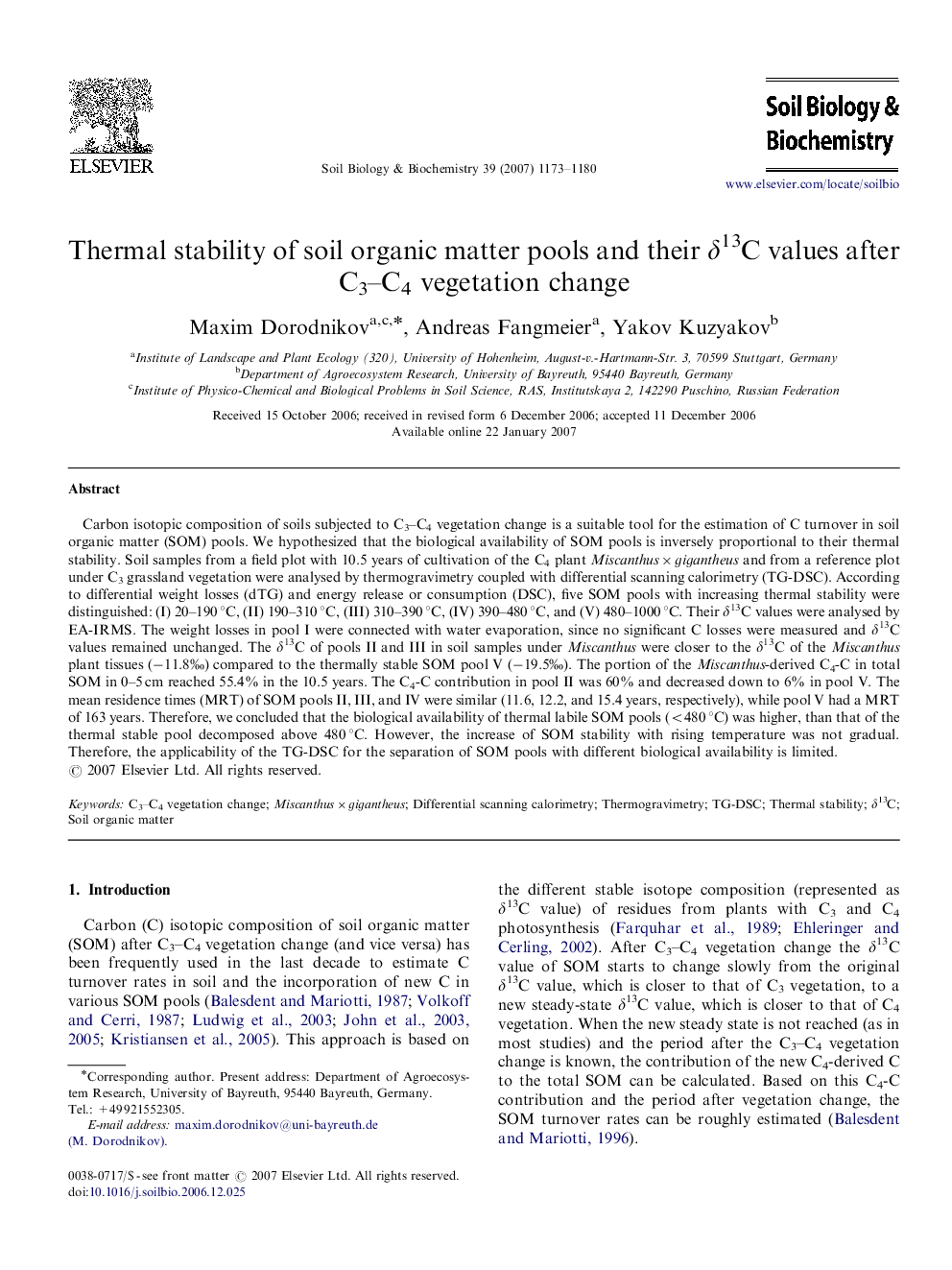| کد مقاله | کد نشریه | سال انتشار | مقاله انگلیسی | نسخه تمام متن |
|---|---|---|---|---|
| 2026424 | 1070029 | 2007 | 8 صفحه PDF | دانلود رایگان |

Carbon isotopic composition of soils subjected to C3–C4 vegetation change is a suitable tool for the estimation of C turnover in soil organic matter (SOM) pools. We hypothesized that the biological availability of SOM pools is inversely proportional to their thermal stability. Soil samples from a field plot with 10.5 years of cultivation of the C4 plant Miscanthus×gigantheus and from a reference plot under C3 grassland vegetation were analysed by thermogravimetry coupled with differential scanning calorimetry (TG-DSC). According to differential weight losses (dTG) and energy release or consumption (DSC), five SOM pools with increasing thermal stability were distinguished: (I) 20–190 °C, (II) 190–310 °C, (III) 310–390 °C, (IV) 390–480 °C, and (V) 480–1000 °C. Their δ13C values were analysed by EA-IRMS. The weight losses in pool I were connected with water evaporation, since no significant C losses were measured and δ13C values remained unchanged. The δ13C of pools II and III in soil samples under Miscanthus were closer to the δ13C of the Miscanthus plant tissues (−11.8‰) compared to the thermally stable SOM pool V (−19.5‰). The portion of the Miscanthus-derived C4-C in total SOM in 0–5 cm reached 55.4% in the 10.5 years. The C4-C contribution in pool II was 60% and decreased down to 6% in pool V. The mean residence times (MRT) of SOM pools II, III, and IV were similar (11.6, 12.2, and 15.4 years, respectively), while pool V had a MRT of 163 years. Therefore, we concluded that the biological availability of thermal labile SOM pools (<480 °C) was higher, than that of the thermal stable pool decomposed above 480 °C. However, the increase of SOM stability with rising temperature was not gradual. Therefore, the applicability of the TG-DSC for the separation of SOM pools with different biological availability is limited.
Journal: Soil Biology and Biochemistry - Volume 39, Issue 5, May 2007, Pages 1173–1180